Greater efficiency in road space use, more discipline and stricter penalties is the way forward

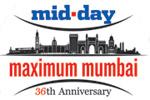 Mumbai is at a critical juncture, 2015 is a mid point in the decade. The new State Govt. has completed its initial teething period. Metro 1 has stabilized at 2.5 lakh trips per day. On the other hand, bus trips per day continue to decline from a peak of 42 lakh per day a few years ago, to 30 lakh a day now.
Mumbai is at a critical juncture, 2015 is a mid point in the decade. The new State Govt. has completed its initial teething period. Metro 1 has stabilized at 2.5 lakh trips per day. On the other hand, bus trips per day continue to decline from a peak of 42 lakh per day a few years ago, to 30 lakh a day now.
Motorbikes, cars, autos and taxis have taken away passengers from buses. Further, additions to daily trips have also come from these alternatives. Growth in trips by suburban rail is 2 per cent p.a. due to more coaches (9 to 12). Somehow, this biggest mode of transport is getting very little attention.
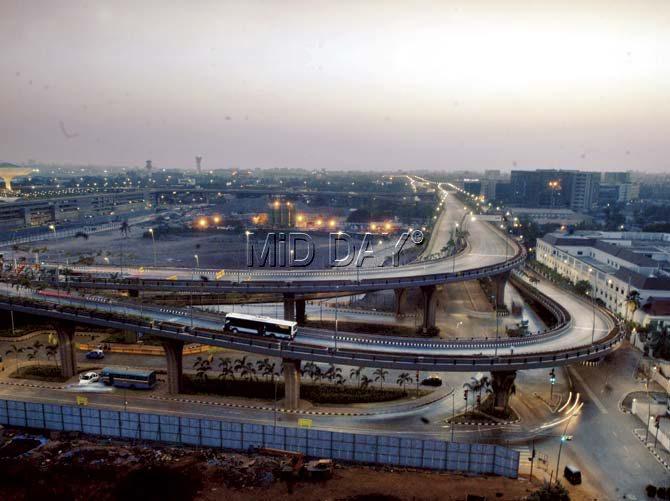
A top shoot of the elevated road which leads to The International Chatrapati Shivaji Airport Sahar also known as T2, The bridge starts from the Western Express Highway, Vile Parle (E). Pic/Rane Ashish
If we modernise the signalling system and add a fifth and sixth track to the northern suburbs, it will make a huge difference to the commuting experience of Mumbai. Then, if we replace in the next five years, all I Class into AC class with appropriate fare, motorists as well as cabs/fleet taxi users can find this as a very powerful alternative.
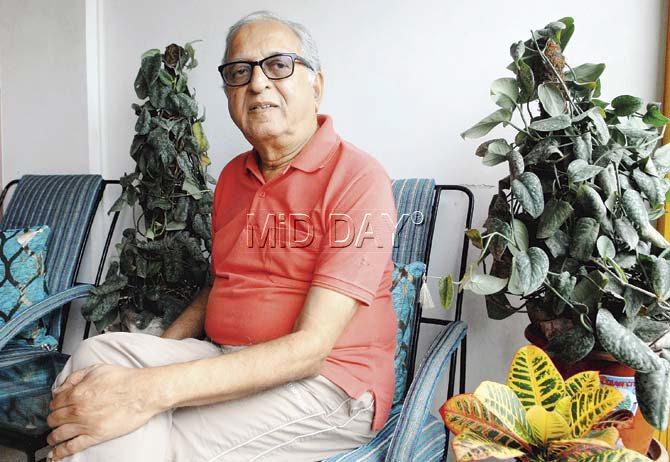
Ashok R Datar outlines his solutions to the problems plaguing Mumbai. Pic/Shadab Khan
Govt. agencies have not assessed the impact of the Santa Cruz Chembur Link completed last year, (neither for the Jogeshwari-Vikhroli Link or the Eastern Freeway). We see now that the Santa Cruz Chembur Link has led to increased traffic jams during rush hours, on this link as also on the BKC road and WEH while providing relief during off peak hours, which are incidentally, shrinking.

A bus goes through a water logged road after a downpour in Mumbai. Pic/PTI
This has also happened to the Jogeshwari-Vikhroli Link Road. The Eastern Freeway has no connections in between and hence it is not used by buses at all. Hence, it is a great boon only for motorists living at Navi Mumbai and beyond. But there are no connections in between and no buses either. Thus Rs 1,400 crore have gone, in effect, to promote private low density, high emission transport and that too, without any toll.
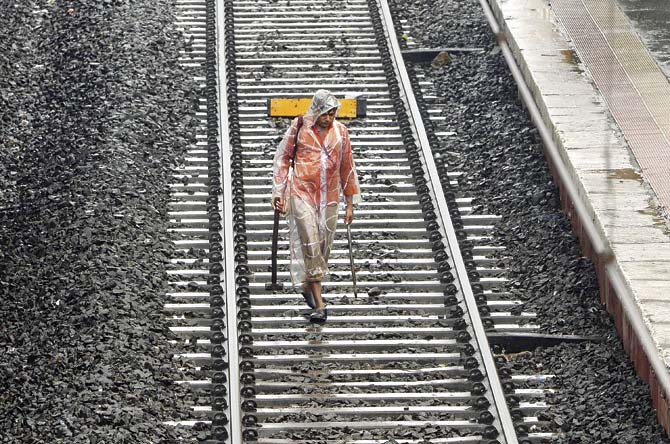
A railway worker walks on a train track during rain showers. Pic/AFP
The Govt has now focused its attention only on the Metro III (33 km costing Rs 23,000 crore to Rs. 687 cr/km within 7-10 years) and Coastal Road costing Rs. 13000 crore+ @Rs. 394 cr /km and 5-8 years for a similar length. The Coastal Road. is going to be a lot like the Eastern Freeway but with many connectors.
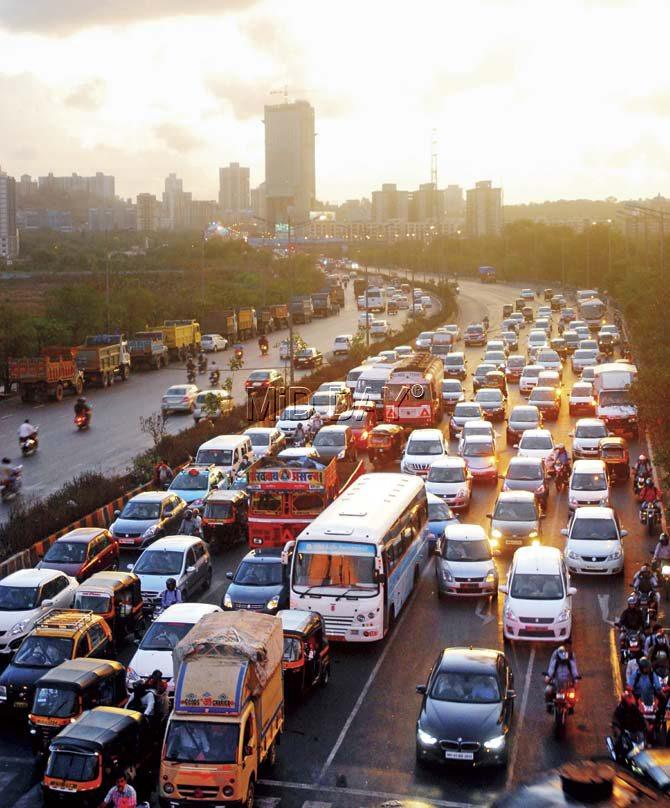
The city where millions come to earn their bread, ‘n’ butter and get traffic jams too! On the Sion-Trombay Road. Pic/Sameer Markande
Hence, buses will be possible but their role will be limited by the space constraints on the already crowded connectors during commuting hours. The Coastal Road will take at least five years. The Govt. has no plans at all till then. Unless we introduce restraint, discipline, parking regulations and bus priority on various roads, notably on the WEH, Mumbai is in serious trouble.
We need to radically improve traffic and parking discipline, which can increase revenue too. But a single minded focus on unsustainable projects such as Coastal Road will mean continued, ‘attention deficit’ to these governance issues. If we do not tackle these issues urgently, and take them seriously, traffic jams will be on the way to a gridlock and road safety will take a further beating.
Peak hour traffic is mostly that of commuters. Perception on traffic improvement is during these hours. In fact, now even the afternoon hours and late evening/early night hours are approaching peak hour jams as more people feel encouraged to bring their cars and motorbikes out or take taxis.
One study shows that during the last seven years, road space occupied by parked vehicles has gone up from 5 per cent to 24 per cent. The number of vehicles on carriageways is also increasing. The patterns show that eventually, all of this will lead to gridlock and ultra-high pollution levels.
The Coastal Road will be used by about 6,000 motorists in 4,000 cars and about 3,000 persons in 60 buses in peak hours, in the peak direction. The Sea Link is used by 2,800 cars and 4,200 motorists. The Eastern Freeway is used by 700 cars and 1200 motorists per peak hour in peak direction. (though there will be multiple users for part distances on a long link with connectors.
That though does not change capacity utilisation of seats.) We should work out the numbers and see whether potential users can be accommodated by higher frequency with AC in suburban trains and a bus priority on WEH. Also, we need to guage whether we can manage the projected traffic in an economically effective way, as well as a more environmentally sustainable manner.
The writer is a transport expert associated with the Mumbai Environmental Social Network (MESN) & the Mumbai Transport Forum (MTF).
Click here for mid-day 36th anniversary special
 Subscribe today by clicking the link and stay updated with the latest news!" Click here!
Subscribe today by clicking the link and stay updated with the latest news!" Click here!









